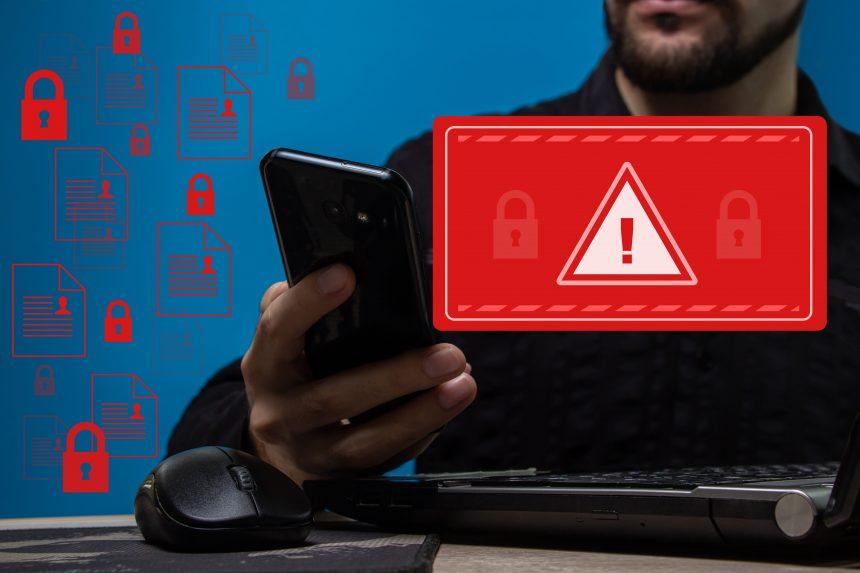FakeCall Vishing Malware is a persistent threat in the cybersecurity landscape, combining traditional phishing techniques with a malicious app to deceive victims. Masquerading as legitimate services, it lures users into revealing sensitive information through “vishing” (voice phishing) tactics. Its ultimate goal is to trick users into divulging bank account credentials and personal data under the guise of a trustworthy contact. This article delves into the inner workings of FakeCall Vishing Malware, its harmful consequences, and essential strategies for identifying, removing, and preventing this malware.
Remove annoying malware threats like this one in seconds!
Scan Your Computer for Free with SpyHunter
Download SpyHunter now, and scan your computer for this and other cybersecurity threats for free!
How FakeCall Vishing Malware Operates
FakeCall Vishing Malware operates in stealth by impersonating reputable banking or financial institutions. Upon installation, the malware enables fraudulent phone calls, usually disguised to appear as if they originate from official bank representatives. Users may receive voice prompts urging them to disclose sensitive information under the pretense of account verification, fraud alerts, or other financial activities. These tactics are designed to exploit users’ trust and urgency, tricking them into sharing private data.
Once the malware gains access, it can harvest a wide range of information, including contact lists, text messages, call logs, and banking details. With this arsenal of data, attackers can then initiate further attacks, such as unauthorized transactions or identity theft.
Detection Names for FakeCall Vishing Malware
Cybersecurity providers have assigned various detection names to FakeCall Vishing Malware, aiding in early recognition. Some common detection names include:
- Android/FakeCall.A!tr
- Trojan.AndroidOS.FakeCall
- HEUR:Trojan-Spy.AndroidOS.FakeCall.gen
- Android.FakeBank
These identifiers can vary between security software but signal the presence of a vishing malware variant with harmful intentions.
Similar Malware Threats
FakeCall Vishing Malware shares tactics with other threats that exploit voice phishing, including:
- FakeBank.A – Also targets mobile devices to intercept SMS-based two-factor authentication codes and access bank accounts.
- Marcher Malware – Focuses on stealing banking credentials and credit card information through phishing techniques.
- EventBot – Uses both SMS interception and fake app overlays to siphon off banking information from unsuspecting users.
Comprehensive Removal Guide for FakeCall Vishing Malware
Removing FakeCall Vishing Malware can be challenging due to its ability to embed itself deep within system files. Follow these steps carefully to eradicate it from your device:
Remove annoying malware threats like this one in seconds!
Scan Your Computer for Free with SpyHunter
Download SpyHunter now, and scan your computer for this and other cybersecurity threats for free!
1. Boot into Safe Mode
- For Android, press and hold the Power button until the power-off menu appears. Tap and hold “Power off” until the “Reboot to safe mode” option displays, then select it.
- Booting into safe mode temporarily disables third-party applications, preventing the malware from running.
2. Uninstall Suspicious Applications
- Open the Settings menu and go to Apps or Application Manager.
- Identify any unfamiliar or recently installed apps that might seem suspicious. Apps with names related to banks or financial institutions but not directly verified by you could be malicious.
- Tap the suspicious app and select Uninstall to remove it.
3. Clear App Permissions and Cache
- Return to Settings > Apps.
- For any suspicious apps, tap Permissions and revoke all granted permissions. This step minimizes the malware’s ability to access personal data.
- Select Storage and clear the app cache and data for these applications.
4. Install and Run SpyHunter
- Download SpyHunter, a robust anti-malware tool designed to detect and remove sophisticated threats, including FakeCall Vishing Malware.
- Run a full system scan to detect any remaining malware components or hidden files associated with the vishing attack.
- Follow the prompts to quarantine and remove all detected threats. SpyHunter offers a comprehensive scanning and removal process to ensure no traces of malware remain on your device.
5. Reset Network Settings
- Navigate to Settings > General Management > Reset > Reset Network Settings.
- This will clear any unauthorized access or modifications to your network settings made by the malware.
6. Verify Google Play Protect Settings
- Open Google Play Store, tap your profile icon, and select Play Protect.
- Enable Scan apps with Play Protect to maintain active protection against future malware installations.
7. Factory Reset (If Necessary)
- In severe cases where the malware persists, a factory reset may be required.
- Backup all essential files and then go to Settings > General Management > Reset > Factory Data Reset.
- Confirm the action and allow the device to reset. This process will wipe the malware but also erase personal data, so it should be used as a last resort.
Best Practices to Prevent Future Infections
- Install Apps from Trusted Sources
Always download applications from the Google Play Store or other trusted app marketplaces, and avoid APKs from unknown sources. - Check App Permissions Carefully
Before installing any app, review the permissions it requests. Be cautious of apps that demand extensive access, such as contact lists or SMS permissions, which are unnecessary for their function. - Enable Two-Factor Authentication (2FA)
Enable 2FA on all financial accounts. Even if malware captures your credentials, 2FA adds an extra layer of security, making unauthorized access more challenging. - Regularly Update Device Software
Android updates frequently include patches for newly discovered vulnerabilities. Keeping your device updated reduces the likelihood of malware exploitation. - Use a Trusted Anti-Malware Tool Like SpyHunter
Equip your device with SpyHunter to actively monitor and remove threats like FakeCall Vishing Malware. SpyHunter’s advanced scanning technology is designed to catch even sophisticated malware variants, ensuring maximum protection. Download SpyHunter to perform a free scan and rid your device of threats.
Conclusion
FakeCall Vishing Malware is a potent and deceptive form of cyberattack that threatens users by leveraging impersonation and phishing tactics. Its ability to trick victims into providing sensitive information makes it a significant risk. By understanding how it operates and following robust security practices, you can defend against this and similar malware. For maximum protection, download and use SpyHunter to perform regular scans, ensuring your device remains free from malicious threats. Act today to safeguard your data and experience a secure digital environment.





